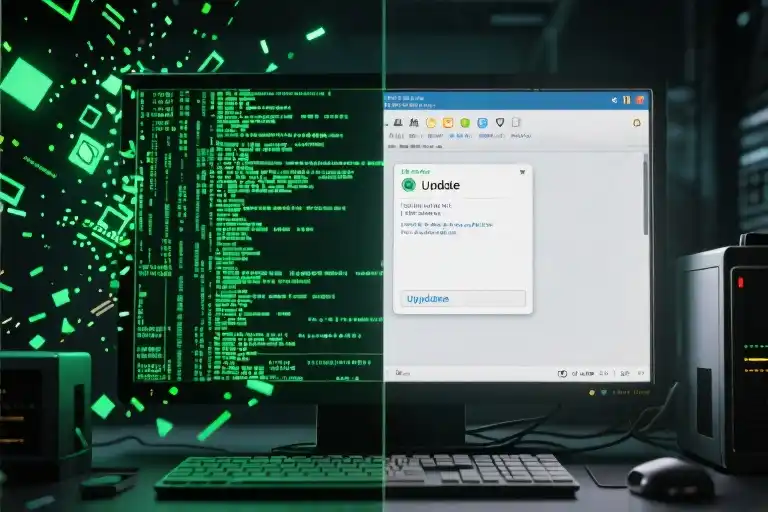The moment you settle into that airport lounge chair and reach for your phone, you’ve already entered a high-risk zone. Public spaces transform our devices into vulnerable targets – not just for pickpockets, but for invisible digital threats lurking behind that tempting ‘Free Airport WiFi’ network. Last year alone, reported cases of travel-related identity theft spiked by nearly 40%, with compromised devices serving as the primary entry point for data breaches.
What begins as an innocent email check over coffee often escalates into compromised bank accounts or sensitive work documents falling into the wrong hands. The businessman two tables over isn’t just scrolling through news – he might be running network scanning software. That charging station by the gate? It could be harvesting your data while powering your phone. These aren’t paranoid fantasies but documented threats confirmed by cybersecurity firms worldwide.
Protecting your mobile companion requires understanding this dual nature of travel risks. Physical security keeps your device in your possession, while digital safeguards maintain control over what happens when you (inevitably) connect to unfamiliar networks. The good news? Implementing essential protections takes less time than waiting in the TSA line. This guide strips away the technical overwhelm, delivering actionable steps you can implement before your next boarding call. We’ll walk through physical precautions even the most vigilant travelers overlook, then dive into the digital tools that create invisible armor around your data.
By the time we reach the emergency protocols section, you’ll have assembled a personalized security strategy matching your travel style – whether you’re a conference-hopping executive or a hostel-hopping backpacker. Consider this your pre-flight checklist for device safety, minus the confusing jargon and unrealistic expectations. Every suggestion has been field-tested by frequent travelers who learned these lessons the hard way, so you don’t have to.
Physical Security: Keeping Your Devices Safe While Traveling
The moment you step into an airport or hotel lobby, your mobile devices become vulnerable in ways you might not expect. That phone casually placed on the cafe table? An easy target for grab-and-run thieves. The laptop screen displaying confidential emails? A feast for prying eyes. Travel security isn’t just about digital threats – it begins with protecting the physical device itself.
The Golden Rule of Device Storage
When moving through crowded spaces, treat your electronics like cash. The hierarchy is simple: on your person beats locked storage beats checked luggage. A crossbody bag with slash-proof straps works better than a backpack in tourist areas where pickpockets operate. Hotel safes can be useful, but remember they’re not impenetrable – never leave devices containing sensitive data unattended for extended periods.
Privacy screen protectors solve a problem most travelers don’t realize they have. Those angled filters limit screen visibility to about 30 degrees, making it impossible for seatmates or queue neighbors to snoop. Look for versions that maintain screen brightness (300+ nits) while reducing glare – crucial when working in sunny destinations. The investment pays off when reviewing financial statements or confidential documents in public spaces.
Choosing the Right Armor for Your Devices
Not all protective cases are created equal. The OtterBox Defender series stands out for its multi-layer design combining inner silicone shock absorption with hard outer shells – perfect for adventure travel where drops are inevitable. Spigen’s Rugged Armor line offers slimmer profiles without sacrificing military-grade drop protection, ideal for business travelers prioritizing professionalism.
Water resistance matters more than you might think. That sudden tropical downpour or spilled cocktail could end your device’s life prematurely. Look for IP68-rated cases if you’ll be near water, and consider waterproof pouches with touchscreen compatibility for beach days. Remember: manufacturer water resistance claims often don’t cover saltwater exposure.
Low-Tech Tricks That Make a Difference
Sometimes the simplest solutions work best. A brightly colored case or distinctive sticker makes your device less attractive to thieves looking for generic, easily resold items. Cable locks designed for laptops can secure devices to fixed objects in hotel rooms when you must step away briefly. And that old “do not disturb” sign? Hanging it even when you’re in the room deters opportunistic hotel staff theft.
These physical precautions form your first line of defense. They won’t stop determined professional thieves, but they’ll eliminate the low-hanging fruit that accounts for most travel-related device losses. The peace of mind lets you focus on what matters – your journey, not constant vigilance over your gadgets.
Digital Security: Building a Three-Layer Protection Net
The moment you step into an airport lounge or hotel lobby, your phone becomes a beacon for digital threats. Public networks swarm with invisible risks, from data sniffers to fake Wi-Fi portals. But with three strategic layers of defense, you can browse with confidence no matter where your travels take you.
Password Management: Your First Firewall
Let’s start with the basics—your passwords. A strong password is like a deadbolt on a hotel room door: simple in theory, often neglected in practice. Tools like Bitwarden or 1Password transform chaotic strings of characters into an organized vault. Here’s how to set up Bitwarden quickly:
- Download the app and create a master password (make it memorable but complex—think “Coffee@Paris2024!” rather than “123456”).
- Enable two-factor authentication (2FA) for an extra lock.
- Use the auto-fill feature to avoid typing passwords in public spaces where prying eyes lurk.
Pro tip: Sync your vault across devices before traveling. Losing access to your password manager mid-trip is worse than forgetting your suitcase.
VPNs: The Encryption Forcefield
Now, let’s talk about VPNs—the unsung heroes of digital travel security. Imagine sending a postcard (your data) through the mail. Without a VPN, it’s written in plain text; anyone handling it can read your bank details. A VPN slips that postcard into a sealed envelope.
Free vs. Paid VPNs:
- Free (e.g., ProtonVPN): Good for occasional use but may limit speed or server locations. Ideal for checking emails at a café.
- Paid (e.g., NordVPN): Faster, with global servers and strict no-logs policies. Essential for frequent travelers handling sensitive work data.
Set your VPN to auto-connect when joining unfamiliar networks. It’s like reflexively locking your hotel door behind you.
Mobile Data: The Safe Harbor
When public Wi-Fi feels riskier than a dimly lit alley, mobile data is your well-lit shortcut. Modern international plans often include affordable data packages—check with your carrier before departure. For heavier usage:
- Enable a personal hotspot (but rename it to avoid generic labels like “iPhone” that scream “hack me”).
- Monitor data usage to avoid bill shocks. In Switzerland, 1GB can cost as much as a fondue dinner.
A final reminder: Update your apps and OS before traveling. Those “update available” notifications aren’t just nagging—they’re patching doors you didn’t know were open.
Layer these three defenses, and you’ll turn your device into a digital fortress. Next, we’ll tackle what to do if the worst happens—because even the best locks can’t guarantee perfect safety.
When Your Device Goes Missing: Emergency Protocols That Matter
That sinking feeling when you pat your pocket and find it empty – we’ve all been there. Whether it slipped out in a taxi or got snatched in a crowd, losing your device abroad amplifies the panic. But here’s the truth: pre-trip preparations matter more than the adrenaline-fueled search efforts afterward. Let’s walk through the two most critical emergency measures you can set up in under ten minutes today.
Remote Wipe: Your Digital Fire Extinguisher
Modern devices offer built-in self-destruct buttons – metaphorically speaking. Activating remote wipe transforms your missing phone from a data liability into just hardware. For iOS users, the Find My network lets you trigger erasure through iCloud.com or another Apple device. Android’s Find My Device works similarly through Google’s web interface. Both platforms require you to:
- Enable the service beforehand (check Settings > [Your Name] > Find My on iPhone or Settings > Security on Android)
- Remember your associated account credentials
- Have internet connectivity on the lost device
The cruel irony? Thieves often disable connectivity immediately. That’s why timing matters – initiate wipe the moment you confirm loss rather than hoping for recovery. One travel blogger shared how delaying this decision cost her six months of client photos when her iPad resurfaced… completely empty.
IMEI: The Serial Number That Actually Matters
While remote wipe protects data, the International Mobile Equipment Identity (IMEI) number helps recover the physical device. This 15-digit fingerprint lives in your Settings (About Phone on most devices) and on the original packaging. Smart travelers photograph their IMEI alongside their passport – two critical IDs that belong together.
Why bother? Many countries require IMEI reports for theft cases. In Spain, police won’t even file a report without it. Some insurers demand IMEI verification for claims. There’s even a slim chance authorities can blacklist the device if recovered. Pro tip: Email the number to yourself as backup; cloud storage survives even if your luggage doesn’t.
The First 60 Minutes Checklist
When the unthinkable happens, follow this sequence:
- 0-5 min: Retrace steps calmly. Check nearby surfaces, ask staff if indoors.
- 5-15 min: Log into Find My/Google’s service. Pinpoint last location.
- 15-30 min: Contact local authorities if theft suspected. Provide IMEI.
- 30-60 min: Initiate remote wipe if recovery seems unlikely.
Remember: No device is worth risking personal safety. That crowded market alley where you think the pickpocket ran? Let it go. Your encrypted data and documented IMEI provide more protection than any confrontation.
When Prevention Fails: Damage Control
Sometimes despite precautions, devices disappear. Beyond the technical steps, manage the human elements:
- Notify banks about potential financial data exposure
- Change critical passwords (email first, then financial accounts)
- Inform contacts about potential phishing attempts
- Request SIM card deactivation from your carrier
A business traveler in Bangkok shared how thieves accessed his corporate email within hours of stealing his phone. The delay in changing passwords allowed them to reset other accounts. Today he travels with a laminated card listing emergency contacts and steps – analog backup for digital disasters.
The Psychological Safety Net
Here’s what rarely gets discussed: the emotional toll of losing your digital lifeline abroad. That phone holds your maps, translations, reservations – your confidence. Before departure, mentally prepare by:
- Printing key addresses and confirmation codes
- Saving embassy contacts offline
- Sharing itinerary with someone trustworthy
These analog backups won’t replace your device, but they’ll soften the landing when technology fails you. Because ultimately, travel security isn’t about avoiding all risks – it’s about containing their impact when they inevitably occur.
Tailored Protection for Different Travel Styles
Security needs vary dramatically depending on whether you’re attending high-stakes business meetings or trekking through remote areas. This section adapts our core protection strategies to specific travel scenarios.
For Business Travelers: Corporate Espionage Defense
Conference rooms and hotel lobbies present unique vulnerabilities. When discussing sensitive mergers or product launches, consider these additional precautions:
Anti-eavesdropping tools go beyond standard VPNs. Apps like Signal offer end-to-end encrypted voice calls, while portable white noise generators can mask conversations in hotel rooms. The EFF’s Secure Messaging Scorecard helps evaluate communication tools.
Discreet device choices matter more than you’d think. That shiny new iPhone 15 Pro attracts more attention than a generic Android mid-ranger with a plain case. Some executives carry decoy devices containing only superficial information.
USB condoms (physical data blockers) prevent juice jacking attacks when charging at airport kiosks or conference centers. These $10 adapters allow power flow while blocking data transfer pins.
For Adventure Travelers: Rugged Reliability
When your journey involves mountain trails or tropical storms, focus shifts from data protection to physical resilience:
Solar-powered battery banks like the Anker 625 maintain charge during extended off-grid periods. Look for models with IP67 waterproof ratings and built-in charging cables to minimize exposed ports.
Shockproof cases need proper certification. The MIL-STD-810G military standard indicates genuine drop protection up to 5 feet onto concrete. OtterBox Defender and UAG Monarch series exceed this benchmark.
Waterproof pouches serve dual purposes – they protect devices during sudden downpours and create instant dry bags for river crossings. Sea to Summit’s Hydraulic Dry Bags offer reliable sealing without bulky cases.
Remember: The most expensive security measures fail if they’re too cumbersome to use consistently. Choose solutions that align with your actual travel habits rather than theoretical risks.
Final Checklist & Interactive Guide
Before you embark on your next journey, take a moment to review these essential security measures. Think of it as packing your digital suitcase—you wouldn’t forget your passport, so don’t overlook these protections for your mobile devices.
Your Travel Security Starter Kit (Free Download)
We’ve prepared a printable one-page checklist covering all critical points from physical protection to emergency response. Slip it into your travel folder or save it to your cloud storage:
- Physical Security Quick Reference: Device storage priorities, privacy screen installation reminders
- Digital Safety Shortcuts: VPN activation steps, password manager setup cues
- Emergency Contacts: Blank fields for local police numbers and your device IMEI
- Pre-Trip Testing: Verification steps for remote wipe functionality
This living document adapts to different travel scenarios—business travelers might highlight the ‘encrypted USB’ section, while backpackers may focus on ‘waterproof casing’ notes.
Let’s Continue the Conversation
Security isn’t about perfection—it’s about practical layers of protection. Which of these strategies resonates most with your travel style?
- Do you swear by your privacy screen, noticing fewer prying eyes during airport layovers?
- Have you discovered a particularly reliable VPN for remote work across time zones?
- Maybe you’ve developed a clever way to discreetly carry devices in high-risk areas?
Share your field-tested tips below. Your experience with that hotel safe that fit your tablet just right, or that time mobile data saved you from sketchy café Wi-Fi—these real-world insights help fellow travelers build smarter habits. After all, the best security advice often comes from those who’ve learned through miles, not manuals.
P.S. Found this guide helpful? Forward it to that friend who still uses ‘password123’—every secure traveler makes the whole community safer.





